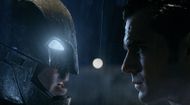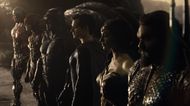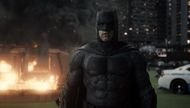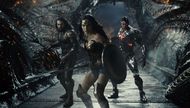The Snyderverse has always been a strange place to live in. Some fans treat it like gospel, while others gave up on it after the first movie. I spent years trying to figure out where I stand. I watched the movies again and again. Sometimes I liked what I saw. Other times, I just wanted it to end.
I saw great visuals and bold decisions. I also saw pacing issues and characters who barely felt human. It never gave full closure, and it kept teasing future plans that never happened. That made it hard to fully invest.
What pushed me to finally sit down and sort my thoughts was a long-overdue rewatch of Zack Snyder’s Justice League. That version felt different. It had structure and purpose but it still carried the same problems I noticed before. It helped me see both the highs and the lows.
This list is not here to defend or tear it down. It shows how the Snyderverse can pull you in and push you away in the same breath. Some parts work. Some parts do not. But after all these years, the truth is clear. It leaves an impression, and that is not easy to forget.
5 reasons why I hate Snyderverse
1. It’s Style Over Substance Too Often

The Snyderverse focuses more on how things look than how they feel. In Batman v Superman, the warehouse fight scene shows this clearly. It looks impressive but does nothing to move Batman’s story forward.
Scenes often stretch just to show destruction or rain-soaked landscapes. The camera holds on explosions while characters barely grow. This pattern repeats across all the films. Snyder nails the visual mood but skips emotional weight. The end result is a universe that looks polished but often feels empty when it comes to the people inside it.
2. It Treats Superheroes Like Gods, Not People

Snyder shows Superman more as a symbol than a human being. In Man of Steel Clark spends more time wandering alone than building real relationships. His moments with Lois are short and underdeveloped.
Batman is shown as brutal and disconnected. He brands people and kills without hesitation. That breaks away from his long-standing comic book code. These choices make both heroes feel cold and distant. Instead of exploring their humanity the films focus on power and myth. That creates a universe where emotions take a backseat to dark and heavy symbolism.
3. The Pacing Feels Like a Chore

Scenes in the Snyderverse move slowly with little urgency. Batman v Superman spends almost an hour building tension without any real action. Dialogue scenes drag with little payoff.
Even Zack Snyder’s Justice League at four hours long often circles back to the same beats. Dream sequences slow down the pace even more. The Flash has great moments but is stuck in slow-motion too often. That drains momentum. Scenes feel stretched just to hit a tone. That makes it hard to stay locked in. The story loses its grip every time it stops to look cool.
4. It’s Too Dependent on What Could Have Been

The Snyderverse keeps teasing future plans that never arrive. The Knightmare timeline gets shown again and again without full context. It hints at a fallen world but gives no answers.
Darkseid appears in Zack Snyder’s Justice League but never takes action. The bigger threat stays in the shadows. Snyder had sequels in mind but they were never made. That leaves the films full of buildup without delivery. Viewers are left chasing setups with no real end. The constant teasing made the universe feel unfinished. It promises too much and gives back too little.
5. It Ignored Core Comic Traits for Shock Value

Batman v Superman introduces Jimmy Olsen just to kill him in one scene. That’s not a twist that adds depth; it removes a key ally for no reason. It happens fast and feels careless.
Batman branding people goes against everything he stands for. Superman killing Zod in Man of Steel changes his moral code in one moment. These aren’t choices rooted in character growth. They exist to shock the audience. That choice made longtime fans feel disconnected. Instead of building on what worked, Snyder changed core values just to make things feel darker.
5 reasons why I love Snyderverse
6. It Took Big Risks

The Snyderverse made choices most superhero franchises would never attempt. Superman died in Batman v Superman before fans saw him grow into a hopeful figure. That shift changed the tone of everything that followed.
Lex Luthor was no longer the calm and calculating businessman. Instead he became a nervous tech tycoon who rambled through every scene. Batman killed without hesitation and Superman struggled with public trust. These were not safe changes. Some of them worked and some didn’t. But each of them showed Snyder was willing to take chances no matter how they were received.
7. The Visuals Are Stunning

Every frame in the Snyderverse feels carefully constructed. The Knightmare scenes show a world buried in silence and ash where broken symbols stand taller than people. Those visuals stay with you long after the scene ends.
Wonder Woman’s entrance in Justice League uses fast strikes and wide angles to show precision and control. The chase on Themyscira feels heavy and fast at the same time. Characters move with weight and purpose. The lighting is harsh and direct. Snyder tells stories through image first. Even when the plot drags the visuals do enough to keep your attention locked.
8. It Gave Us a Cohesive Vision

Most franchises have tonal shifts when directors change. The Snyderverse avoided that by keeping the same eye behind the camera. From Man of Steel to Zack Snyder’s Justice League the world looked and moved the same.
Scenes were dark but controlled. The camera often moved slowly to let moments land. Visual patterns repeated across films. Gods fell from the sky in every movie. That gave the series a rhythm even when the writing lost focus. You could tell the same hand shaped every part. That consistency gave the Snyderverse a voice even when it missed the mark.
9. The Director’s Cut Redemption Arc Is Real

The theatrical cut of Justice League felt hollow. Characters were flat and jokes came out of nowhere. After Snyder stepped away the studio brought in Joss Whedon who changed major parts of the story.
In 2021 Snyder’s full version arrived. Cyborg’s backstory returned. Darkseid finally showed up. The plot made more sense and the emotion felt earned. Four hours gave space for arcs to land. It was not just longer. It was more focused. The changes were clear. Fans saw how much had been stripped away. That release turned a forgotten film into something people actually cared about.
10. It Sparked Passionate Fandom and Debate

The Snyderverse created one of the loudest online movements in recent memory. The push to release the original Justice League cut lasted years. Fans sent letters bought billboards and flooded social media with the same message.
Even people who disliked the Snyderverse films paid attention. Debates over Superman’s morality and Batman’s tactics filled timelines. Snyder’s version turned movies into ongoing discussion points. Fans defended every frame while critics questioned every line. That tension made the franchise feel bigger than the screen. It showed how invested people can get when they feel like their voices might actually change something.
Follow for more updates.
Love movies? Try our Box Office Game and Movie Grid Game to test your film knowledge and have some fun!
